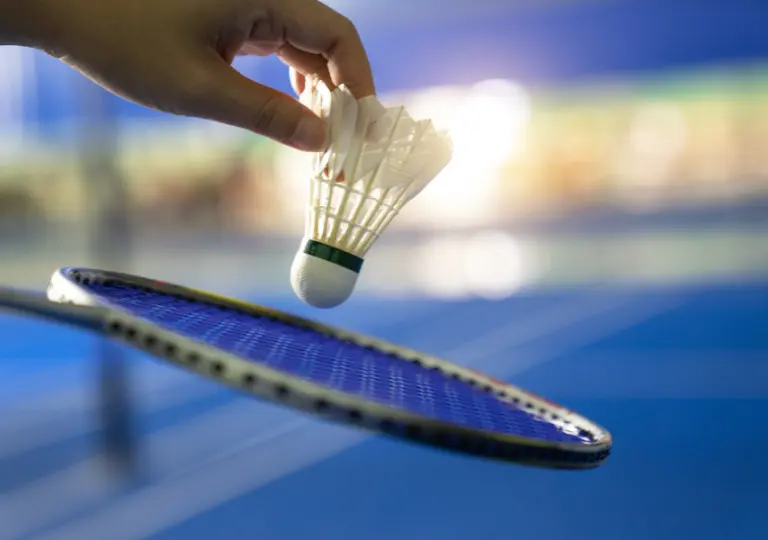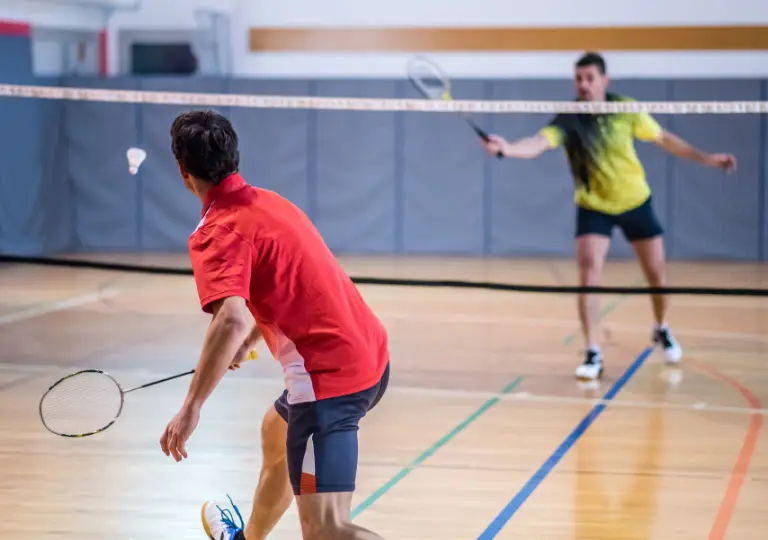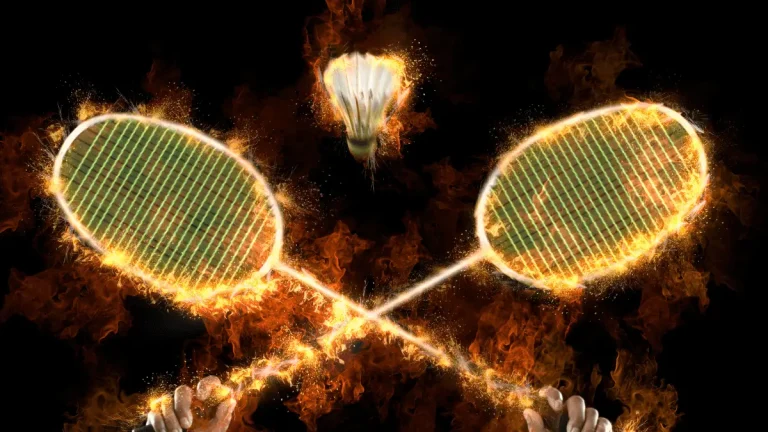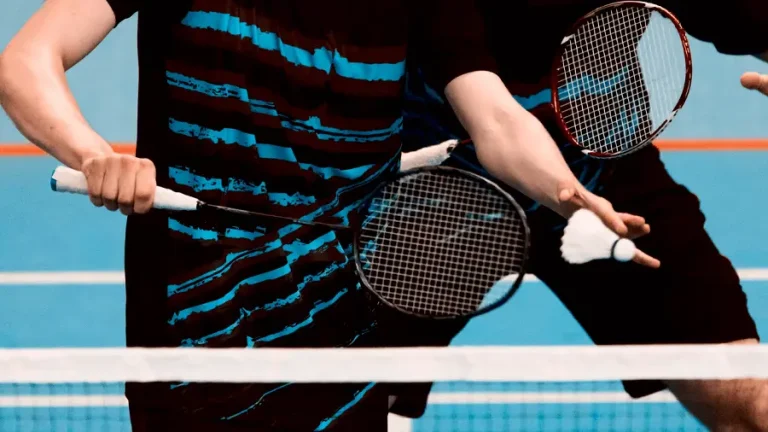Badminton Racket String Tension | Complete Guide 2025
If you’ve been engaged in badminton for a considerable time, you’ve probably encountered discussions among players about the Badminton racket string tensions they prefer for their rackets. You might have encountered individuals who opt for 20 pounds (9.1 kg), while others might push the boundaries even further, exceeding 30 pounds (13.6 kg)!
The question then arises: which tension is the most suitable for you? In this article, we’ll delve into this matter and provide an answer to not only what tension is recommended but, more significantly, why it is the optimal choice for you.
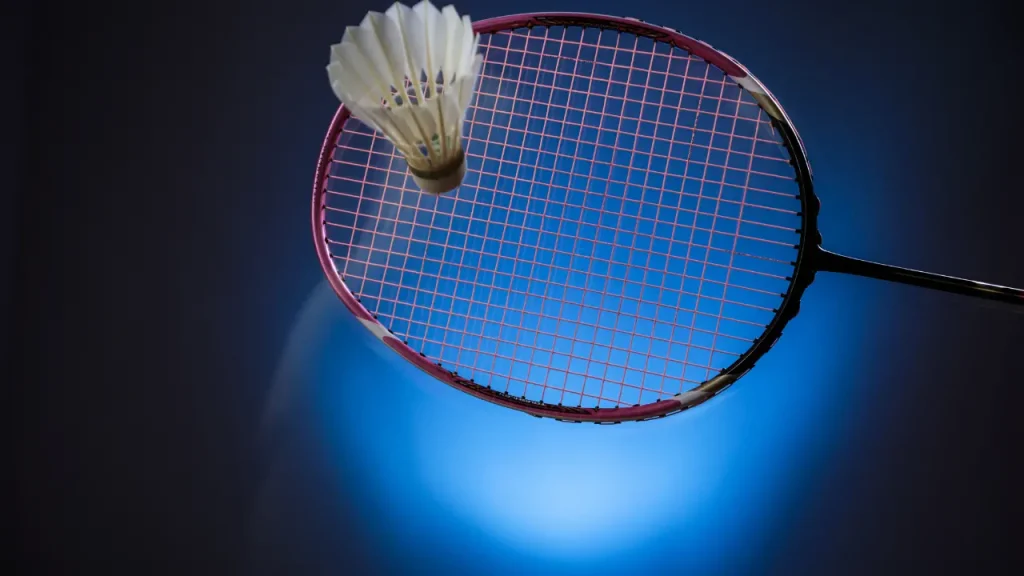
What Should Be My Recommended Best Badminton Racket String Tension?
When you invest in a new racket, you can rely on the manufacturer’s stringing recommendations to guide you. These suggestions provide a helpful starting point for determining the general range of string tightness that is suitable for your racket.
However, the tension you choose will ultimately depend on individual factors unique to you, such as your skill level and personal preferences. Considering these aspects is crucial in finding the ideal string tension that will enhance your performance and satisfaction on the court.
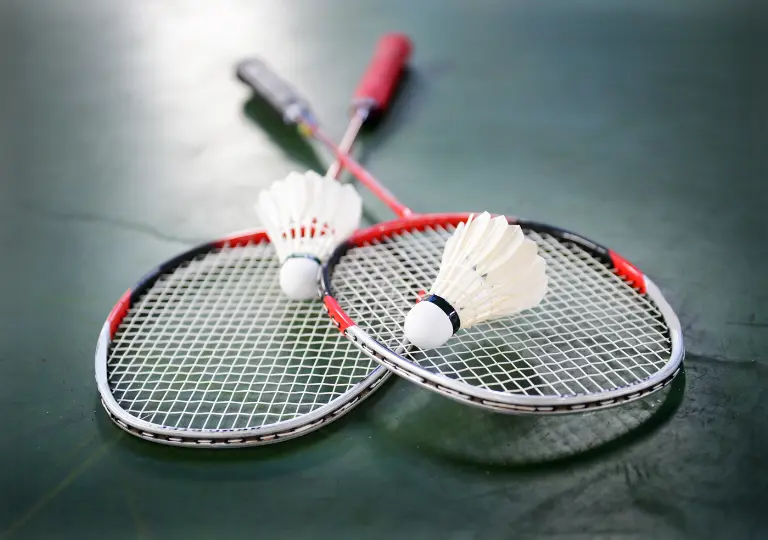
Here are the benefits and drawbacks of low, medium, and high tension:
Low Badminton Racket String Tension
For beginners, the low string tension is frequently discussed in badminton racket string tension, typically ranging from 17 to 21 pounds (7.7 to 9.5 kilograms), although opinions may differ.
Low-string tension benefits beginners by enlarging the racket’s sweet spot, increasing power and durability. However, intermediate and advanced players prioritizing accuracy and control may find low tension less advantageous.
Advanced players with sharp swing techniques often prefer higher string tensions as it balance control and power. While low tension can boost power for beginners, it has its limits, prompting experienced players to opt for higher tensions.
Medium Badminton Racket String Tension
Regarding badminton racket string tension for intermediate players, medium string tension is often preferred. This range typically weighs 22 to 26 pounds (10 to 11.8 kilograms).
Ideal for intermediate or advanced players seeking improved control and accuracy. Less advantageous for beginners since it slightly reduces the size of the sweet spot. Missing the sweet spot can result in a significant loss of power.
For players at an intermediate level, opting for a medium string tension allows them to refine their control and precision. While it may not be as forgiving as low tension for beginners, the trade-off lies in gaining better command over shot placement and accuracy.
High Badminton Racket String Tension
High tension is often preferred when it comes to the string tension of a badminton racket for smash shots. High string tension, typically exceeding 26 pounds (or 11.8 kilograms), is commonly favoured by players who have mastered their racket-handling skills. High tension provides the following characteristics:
Ideal for advanced or professional players seeking precise control and accuracy. If you can generate substantial power through your technique alone and consistently hit the shuttle with precision, you may find this level of tension enjoyable.
Less supportive in terms of durability. While higher string tension can offer significant advantages to skilful players, there may be better choices for those seeking long-lasting strings. The increased tension strains the strings, making them more prone to weakening or snapping, particularly when the sweet spot is missed. This is because areas near the frame experience additional tension.
High-string tension can be valuable for advanced or professional players who prioritize laser-sharp control and accuracy. However, it’s essential to be mindful of the trade-off regarding durability and the increased risk of string damage.
How Does String Tension Affect The Badminton Racket
String tension may significantly impact the performance of the Badminton Racket. Here are some ways in which string tension affects a Badminton racket.
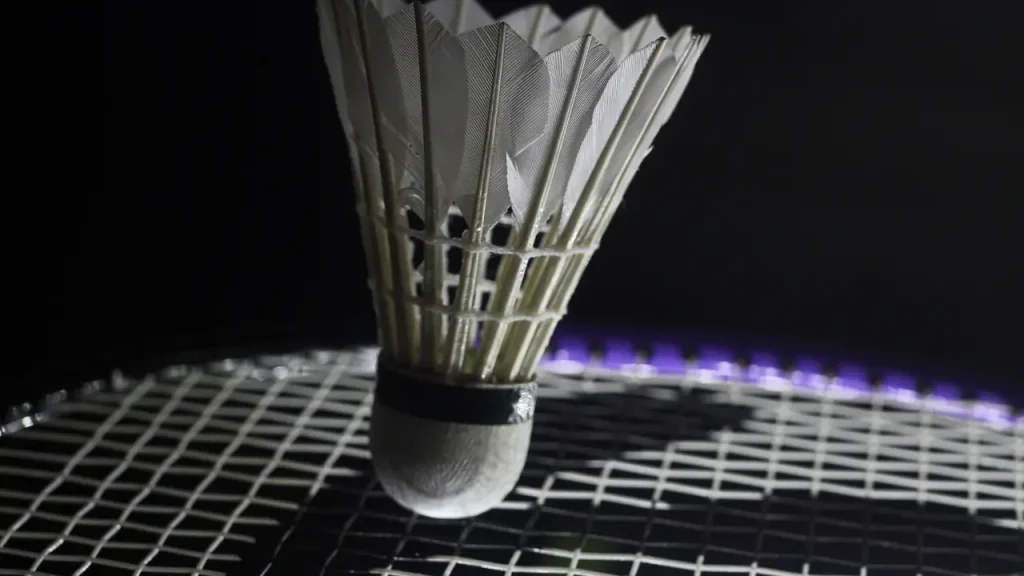
Power And Control: String tension directly impacts the power and control of your shots. Higher tension offers better control and accuracy but sacrifices some power. Lower tension provides more power but reduces control. Higher tension suits players who rely on finesse and technique, allowing precise placement and shot accuracy. Lower tension is preferred by players relying on powerful smashes and aggressive shots, enabling them to generate more power.
Shot Repulsion: String tension directly impacts the energy transfer to the shuttlecock. Higher tension yields faster shots and increased shot-making opportunities, while lower tension results in slower shots by absorbing more energy from the shuttle upon impact.
Sweet Spot: On a badminton racket, the sweet spot is where maximum power and control can be attained. String tension influences the size and position of the sweet spot. Higher tension reduces the sweet spot, making it harder to generate power consistently. Lower tension enlarges the sweet spot, allowing for more forgiveness and easier power generation from off-centre shots.
Durability: String tension impacts both the durability of the strings and the racket frame. Higher tension increases stress, resulting in quicker string breakage or potential frame deformation. Conversely, lower tension reduces strain, extending the lifespan of both the strings and the racket frame.
Here is the summarized Badminton racket string tension chart:
| String tension | Power | Control | Durability | Feel | Vibration |
|---|---|---|---|---|---|
| Low | Easy | Decrease | Increase | Decrease | Decrease |
| Medium | Medium | Medium | Medium | Medium | Medium |
| High | Hard | Increase | Decrease | Increase | Increase |
How To Check Badminton Racket String Tension
By Badminton Racket String Tension Machine
To measure the string tension of your badminton racket, you can follow these steps:
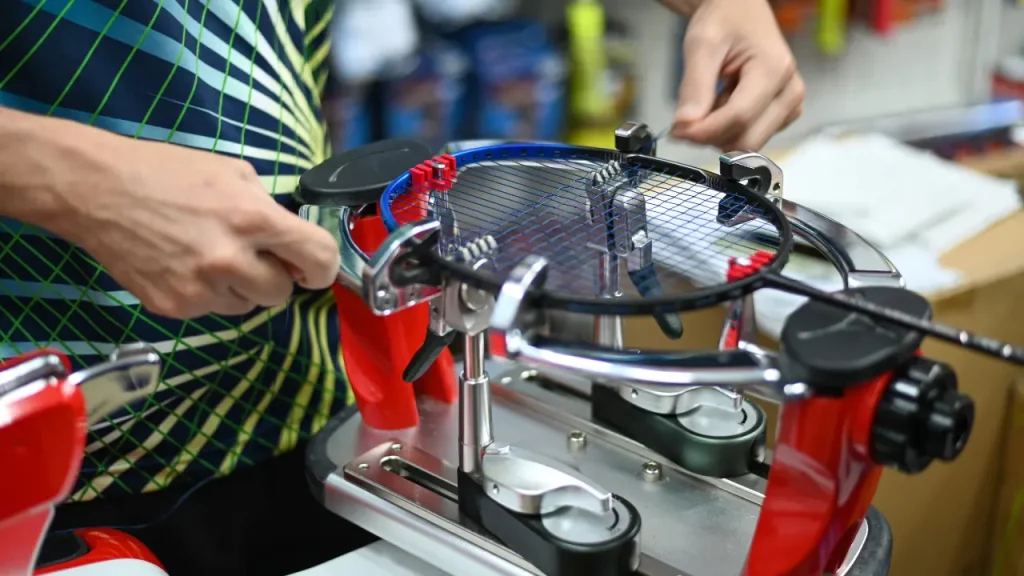
Find a specialized string tension measuring device called a stringing machine. These machines are commonly found at badminton pro shops, sports equipment stores, or clubs. If you don’t have access to a stringing machine, you can also seek assistance from a professional stringer who can measure the tension for you.
Place your racket securely in the stringing machine’s mounting system, or use a secure clamp to hold it.
Activate the tension head of the machine by either pulling the strings or using the tensioning mechanism. This action applies pressure to the strings, simulating the tension.
Read the tension value displayed on the machine’s display or gauge. The tension will typically be indicated in pounds or kilograms, depending on the machine.
Note the tension reading, which represents the pressure or force applied to the strings.
By Using Mobile Application Stringster
Before measuring, ensure your racket is clean and dry. Firmly hold the racket in one hand and tap its head against your other hand’s palm. For high-tension rackets, multiple taps may be needed for accuracy. If unsure about the string tension, you can enter an estimated value, and the app will adjust the measurement accordingly.

To measure the string tension, you need to follow the given tips:
- Open the app
- Select “Badminton” racket type
- Enter the brand, model, String type, and string gauge of your racket
- Hold your racket in one hand and tap the head of the racket against your other hand’s palm
- The app will start measuring the string tension of your Badminton racket.
How Frequently Should a Badminton Racket Be Restringed?
A general guideline suggests that you should rest your rackets approximately as many times a year as you play per week. For instance, if you play three times a week, you should aim for three restrings per year, assuming your strings haven’t broken earlier. If you’re using a thinner gauge string with tension over 24 pounds, there’s a higher likelihood of experiencing string breakage more frequently.
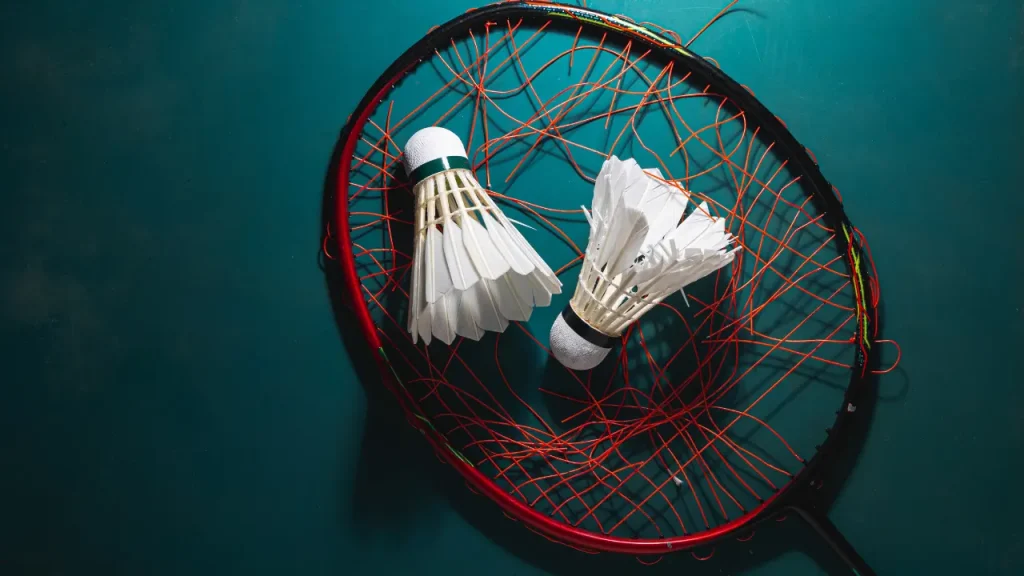
However, for advanced players, it is advisable to restring your racket at least once a month, assuming the strings haven’t broken before then. This is because, over time, the tension decreases, and the strings lose their optimal performance. The frequency of restringing depends on your playing intensity, string type, and tension preferences.
Summary
The choice of standard badminton racket string tension is subjective and depends on skill level and playing style. Beginners may benefit from lower tension, while intermediate and advanced players prefer medium or higher tension for control and precision. It is essential to consider manufacturer recommendations and restring regularly to maintain optimal performance.



